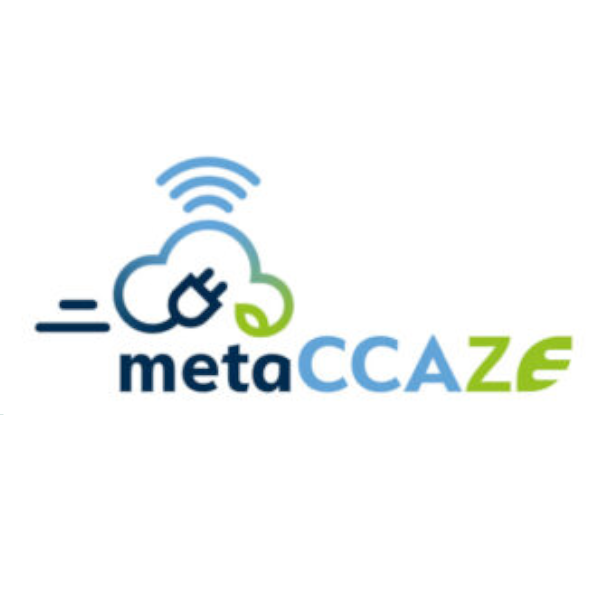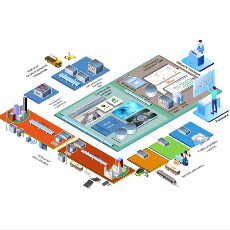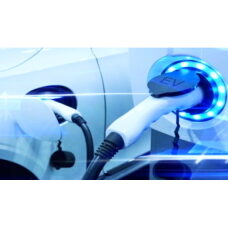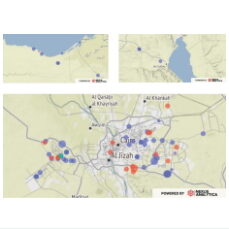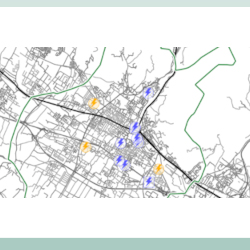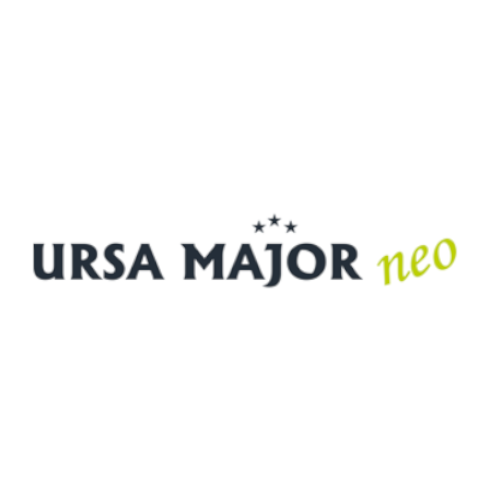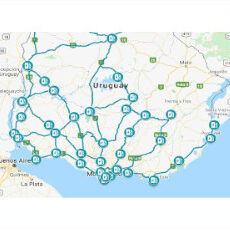- All
- African projects
- assessment
- assessment selected projects
- Assessment selected projects 2
- Assessment selected projects 3
- Assessment selected projects 4
- ASTRA
- Cost Benefit Analysis
- Electric mobility and ITS
- MOMOS
- planning
- planning selected projects
- planning selected projects 2
- planning selected projects 3
- planning selected projects 4
- planning selected projects 5
- projects
- Railways projects
- research
- research selected projects
- research selected projects 2
- research selected projects 3
- studies
- studies selected projects 1
- studies selected projects 2
- studies selected projects 3
- studies selected projects 4
- studies selected projects 5
- TRTingegneria
- TRUST
- urban mobility
- Pre-feasibility study for the establishment of a Vertiport in the Municipality of Piacenza The pre-feasibility study for the establishment of a vertiport in Piacenza is pioneering in the context of Urban Air Mobility themes and has been structured around three main lines of activity: market analysis, demand analysis (potential), and location hypotheses. The market analysis and its prospects involved an in-depth examination of electric vertical takeoff and landing (eVTOL) aircraft, their temporal outlook, and the technological barriers associated with such technologies. An overview of the global and national market was provided, and insights were developed regarding the ground infrastructure enabling these new services – Vertiports – as well as potential services, taking into account industry regulations. Furthermore, a detailed analysis was conducted on both global and Italian cases of experimental vertiport implementations, examining the regulatory framework in the sector. The analysis of potential demand was conducted using big data, derived from mobile network cells, and focused on exchange flows with possible attractor centres within a radius of approximately 150 km from Piacenza. These attractor centres included the city of Milan and the airports of Milan (Maplensa and Linate), Bergamo, Bologna and Turin. The potential locations for the vertiport within the territory of the Municipality of Piacenza were examined, taking into account the necessary infrastructure elements and European guidelines provided by EASA (European Union Aviation Safety Agency). The selection criteria favoured pre-existing, accessible areas. Finally, the estimate of the minimum required square footage and associated costs have been prepared.
- Flexibly adapted MetaInnovations, use cases, collaborative business and governance models to accelerate deployment of smart and shared Zero Emission mobility for passengers and freight MetaCCAZE is a “Research and Innovation Action” Horizon Europe project to support the implementation of the Climate-neutral and Smart Cities Mission. Its overreaching mission is to accelerate the user-centred deployment of smart systems and services that combine electric automated and connected mobility and related infrastructure across European cities. The project organizes a series of MetaDesign activities with multisector-stakeholders and population groups to develop co-designed and shared zero-emission mobility use cases, collaborative business and governance models. A toolkit called MetaInnovations will be developed consisting of six main smart technologies (1. grid supply-fleet-demand; 2. AI-Datawarehouse; 3. inductive automated charging; 4. remote control centre for Avs and ADAS for parking and docking; 5. AI-driven re-scheduling tools for e-services; 7. Digital twin optimisation). These technologies will be implemented to improve passenger and freight services (PT, on-demand minibuses, bike sharing and deliveries) and related infrastructures (mobility and logistics hubs, traffic management centres, charging infrastructure) in 4 trailblazer cities (Amsterdam, Munich, Limassol, Tampere). Successful cases will be transferred, implemented and demonstrated in 6 follower cities (Athens, Krakow, Gonzo, Milan, Miskolc, Paris region). TRT is leader of WP1 that sets the ground by reviewing the current situation in the cities and defining the several activities that will help structuring the implementation of the trailblazer and follower cities as well as their cross-fertilization. TRT will also design the standard impact evaluation framework that will be used by the cities to assess the efficiency and to ensure that their impacts aligns with the MISSION and SUMP/SULP targets. Finally, TRT will also prepare the “MetaPolicy Package” to contribute to updates of urban and transport policies and feed the strategic research and innovation agendas (SRIA) of CCAM, 2ZERO, CIVITAS and other initiatives.
- Mapping study on digital and technical solutions to enable more effective and user-friendly UVARs, while respecting the principle of subsidiarity The broad objective of the study is to support the operation of more efficient, user-friendly and non-discriminatory UVARs across the European Union for both vehicle users, operators and city authorities. For vehicle users (private and commercial) the specific objective is to improve the ease and efficiency of UVAR pre-registration procedures while, for authorities, to ease the conformity checks of vehicles. This study will seek to achieve the abovementioned objectives by identifying and mapping EU interoperable technical and digital solutions (or combinations thereof), as well as respective realistic and feasible implementation options, that facilitate seamless travel across the EU. This further “mapping study” builds on UVAR Exchange results and is structured in 4 Tasks. Task 1 starts with the identification, mapping, analysis and further clarification of interoperable digital and technical solutions or their combinations thereof, including an analysis of what it takes to implement them on the ground. Task 2 will provide an overview of the identified technology combinations with its specific pros and cons, constraints and challenges, including the notions of user-friendliness and non-discriminatory aspects. It will investigate and suggest EU-wide interoperability standards needed for UVAR compliance and enforcement technologies and digital solutions Task 3 will build from the previous and draft a roadmap of actions. Task 4 is a transversal task that will concentrate all stakeholder engagement and consultation activities TRT leads Task 3 activities and is responsible for investigating digital tachograph and camera-based solutions including data exchange and enforcement practices and IT systems in use in Italy. Besides TRT, the awarded consortium is composed of Panteia (NL), MAPtm (NL) and Austriatech (AT). The study follows the previous European Parliament Preparatory Action, contracted by DG MOVE, for an “User-friendly information tool on urban and regional vehicle access regulation schemes” that generated the projects UVAR Box and UVAR Exchange (https://uvarbox.eu/) with TRT as partner of the two consortia.
- Design and assessment of the National E-Mobility Strategy in Jordan Electrification is one of the main options towards decarbonizing the transport sector. The Jordanian transport sector, currently reliant on fossil fuels, accounts for nearly 40% of the energy consumption in the country in 2020. Transport decarbonisation has to be addressed to achieve Jordan’s ambitious Nationally Determined Contribution (NDC) goals. From electricity-sector perspective, uncontrolled electric vehicle (EV) uptake may bring challenges such as increase in peak load and distribution grid congestion, but also present financial and technical opportunities due to new revenue streams. Seeing the potential and benefits of E-Mobility uptake, the Government of Jordan has included Designing a National E-Mobility Strategy as part of its Reform Matrix, under Pillar 9 Energy. To this end, the Ministry of Energy and Mineral Resources (MEMR) has been leading the effort in coordination with key stakeholders and implementing partners. The World Bank (WB), through the Jordan Growth Multi-Donor Trust Fund (MDTF), supports MEMR and GoJ in its mandate with required Technical Assistance (TA) activities. This project will inform the WB’s policy dialogues in Jordan related to scaling up E-Mobility, in the context of the GoJ’s effort to design, launch, and implement a National E-Mobility Strategy. This study will have a particular focus on energy-sector issues (notably charging infrastructure and charging tariff), but also build upon past efforts, consolidate previous findings, systematically assess the key issues at stake, and provide valid and actionable options in order to support GoJ’s formulation of a comprehensive National E-Mobility Strategy. TRT, supported by MRC (Spain), is leading the project and is responsible for the design and assessment of the strategy. As part of its activities TRT has developed the Jordan vehicle fleet model to forecast the uptake of electric mobility.
- Unlocking opportunities for private sector participation in electric mobility transition in Jordan and Egypt Electrification of transport stands out amongst the most promising emerging solutions at the interface of clean energy transition and sustainable transportation. Countries in the MENA (Middle East and North Africa) region are at very different stages of Electric-Mobility development. However, E-Mobility creates opportunities for climate change mitigation and adaptation, increase energy efficiency, enhance quality of transport services, and improve urban air quality, while taking advantage of the integration of higher shares of renewable resources, energy storage and demand response technologies in the evolving electricity grids across the region. The objective of this twofold consulting assignment is to provide support to the World Bank task team to deliver technical assistance to both Jordan and Egypt, with the aim to facilitate: private sector participation (PSP), including different forms and levels of engagement from the private sector to collaborate with the public sector (PPP); and private capital mobilization (PCM), which enables and leverages private sector investment to maximize the total financing resources available for development purposes, to support a more ambitious goal towards E-Mobility development. The studies for the two countries focus on two main pillars (e-buses fleets and EV public charging infrastructure), and provide operations-ready and investment-ready output, with suggestions on feasible business models and potential contractual arrangement for PSP and PCM in the e-mobility transition and investment rollout. The two projects are carried out by the same lean international consortium made by MRC Consultants and Transaction Advisers (ES), leading, and TRT (IT). In the consortium, TRT is specifically responsible for the EV charging infrastructure sub-sector (in both countries) and is leading the study related to Jordan.
- Electric Mobility Plan of the city of Prato The development of an e-mobility sector plan is one of the actions foreseen by the current SUMP (2017) for both vehicular mobility (private fleets, public facilities, passengers and goods) and public and collective mobility (PT and sharing). In this sphere, the City of Prato requested the drafting of an Electric Mobility Plan (EMP) in order to indicate a scenario for the development of e-mobility, as a coherent set of measures capable of acting on the supply side (sizing and general location of electric vehicle recharging stations), and of measures to support the demand for mobility. The study envisages the construction of a cognitive framework with the aim of outlining the current and future scenario of e-mobility demand and supply On this basis, the EMP identifies: the current state of demand (composition of the circulating vehicle fleet) and supply of charging infrastructure for public use in the city; a trend scenario, projection in the future five-year period of growth rates in demand (estimates of the evolution of the electrically driven vehicle fleet) and supply of charging infrastructure for public use; an evolutionary scenario formulated in consideration of the targets set at EU and national level and indicated in recent planning and programming documents (cf. PNIRE and National Recovery and Resilience Plan-NRRP). Based on the evolutionary scenario, the infrastructural endowments are therefore sized, disaggregated according to the performance of the recharging stations (slow-accelerated or fast) intended for private and public fleets, as well as their broad locations. All these aspects represent the technical elements to support the Administration of Prato in the subsequent phase of selecting the operators who will be called upon to develop the recharging network in the urban area in accordance with the regulatory provisions. TRT was also responsible of the drafting of the Sustainable Urban Mobility Plan, the Parking Master Plan and the Urban Traffic Plan of the city of Prato In 2022, TRT also drafted Prato’s SUMP monitoring report in accordance with the indicators of DM 396 of 28/08/2019.
- Analysis of ITS applications and solutions at logistics nodes Ursa Major neo project is co-financed by the Connecting Europe Facility of the European Union. The main goal of UMneo is to identify the best ITS solutions to interconnect the logistic nodes (ports and freight villages) and arches (road networks) for sharing each other information about traffic conditions or allow operators to book in advance some specific services. ITS (Intelligent Transport Systems) are known to be effective for several applications in the entire supply chain, e.g. for reducing congestions at gate terminals or along the road, for saving time and costs, for reducing the environmental footprint of logistics activities, etc. The Italian partners involved in UMneo are the ports of La Spezia, Livorno, Ravenna, Trieste, Venezia, the freight village of Verona and the road network operators ANAS S.p.A, Autovie Venete S.p.A., Autobrennero S.p.A. and Autostrade per l’Italia S.p.A. TRT was commissioned by RAM to describe the state of the art about ITS services and systems applied or planned in ports and freight villages infrastructures involved in the Ursa Major Neo project, pointing out the most relevant best practices. Final results come both from desk-analysis and specific interviews that TRT performed with the involved partners. For more information: Ursa Major Neo project Objectives of the Ursa Major project on NeoAutobrennero S.p.A. website
- SLOWMOVE – A study on the development of e-mobility in the waterway between Locarno and Milan TRT, together with Ambiente Italia, was entitled by Novara Province to develop a study within the INTERREG project «SLOWMOVE Ponti d’acqua verso il futuro. Lo sviluppo del trasporto lungo il Lago Maggiore, il Ticino ed il sistema dei canali secondo una prospettiva di rispetto ambientale e di incremento del turismo green» (SLOWMOVE Water bridges towards future. Development of the territory along Maggiore lake, Ticino river and canals in a perspective of environmental protection and development of green tourism). The first phase of this study was focusing on supply of charging stations and other electrified modes of transport. Moreover, it provided an overview of the area by linking together demographic data, tourist attractions, tourism statistics, etc. Furthermore, a legislative analysis was included for both Italy and Switzerland, regarding inner water navigation, e-mobility and its charging standards together with an overview of planning documentation. The second phase consisted in the formulation of three different scenarios (high, medium and low) that tried to foresee the development of the charging station infrastructure. Those scenarios were evaluated by local stakeholders with a participative process. Eventually, a third phase included an economical and an environmental impact of the identified scenarios. The first one evaluated the investment cost for every scenario and the demand characteristics. The second compared environmental performances of traditional and electric mobility and it estimated emission reduction. For more information (available only in italian) Press release about Slowmove workshop “La vocazione del territorio di Slowmove per la mobilità sostenibile lungo l’idrovia. L’indotto economico legato alla fruizione turistica e allo sviluppo del settore” (The vocation of the Slowmove area for sustainable mobility along the waterway. The economic impact of tourism and its development) YouTube video of Slowmove workshop “La vocazione del territorio di Slowmove per la mobilità sostenibile lungo l’idrovia. L’indotto economico legato alla fruizione turistica e allo sviluppo del settore” (The vocation of the Slowmove area for sustainable mobility along the waterway. The economic impact of tourism and its development) The report published on Novara Province website The program of the conference “Waterway & Mobility State of the Art, Results and Perspectives” (“Idrovia&Mobilità Stato dell’arte, risultati e prospettive”) and its presentations (in italian) The program of the conference “A lighthouse on the waterway” (“Un faro sull’idrovia” in italian) and the video of the first part of the event, during which TRT presented its cotribution (in italian).
- Technical Assistance to Develop a Business Model to Finance and Scale-up E-Mobility in Uruguay Uruguay has an emerging electric vehicle sector, with good growth prospects and a strong policy agenda on fleet electrification. The country has committed to several mitigation measures in the transport sector, such as the introduction of electric vehicles in public transport, of utility electric vehicles and the installation of the first electrical route of Latin America connecting Colonia-Montevideo-Chui. The main objective of this project is to provide a policy and regulatory guide for a smooth transition to e-mobility in Uruguay and help the country to achieve an efficient and sustainable transport decarbonisation, through: Diagnosis of the current infrastructure and regulatory situation of e-mobility; Assessment of the several pilot projects already developed; Identification of desired business models and financing scheme for e-buses and private EVs; Propose a policy and regulatory guide to achieve overall e-mobility expansion targets in a time-line consistent with Uruguayan Nationally Determined Contributions (NDCs) to the Paris Agreement objectives; Propose a consistent and sustainable body of fiscal incentives and subsidies to favour and promote the previous e-mobility targets. The project is carried out by an international consortium led by MRC Consultants and Transaction Advisers (ES) and composed by TRT (IT) and SEG Ingeniería (UY). TRT is specifically involved in the project component related to private e-mobility, as well as in the fiscal impact assessment to proposed measures and policies. The project will provide a set of outputs including: E-bus financing alternative sschemes with estimated cost impact, timeframe, and impact on rolling stock; Assessment of long-term fiscal impact and ways to ensure efficiency and sustainability of alternative schemes; Regulatory and fiscal incentive schemes to sustainably increase use of private e-vehicles; Long-term fiscal impact analysis of incentives and tax revenues from foregone taxes, and elaborate recommendations; Two public workshops and related materials available for knowledge sharing.


